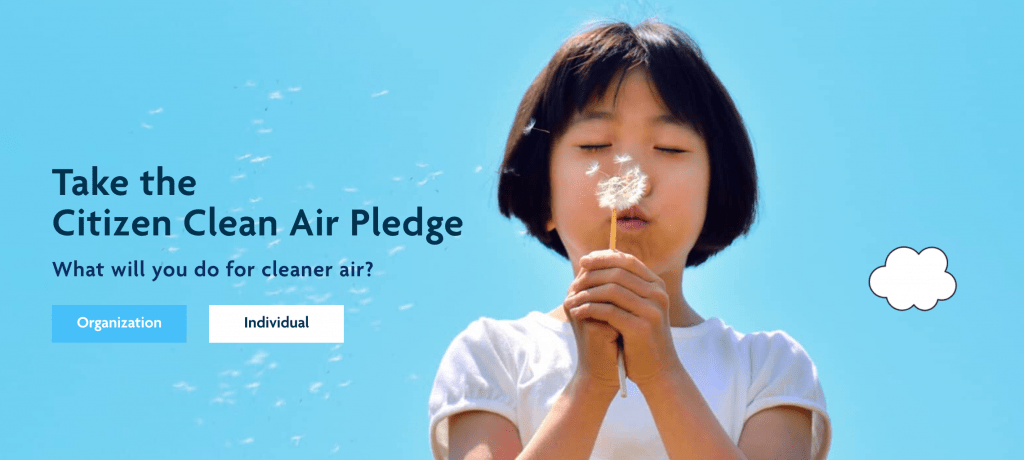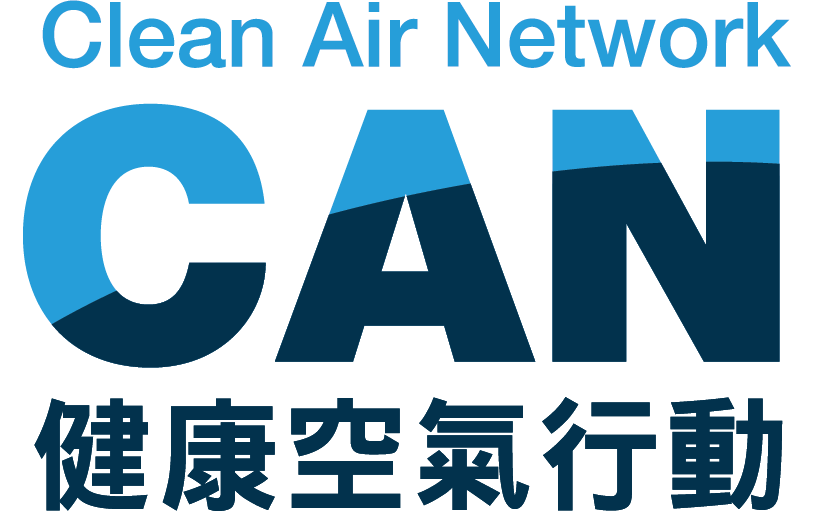
Press Conference – Launch of “Citizen Clean Air Plan”
Clean Air Network Press Conference Launch of “Citizen Clean Air Plan”
With unprecedented global and regional momentum on green recovery, the society at large has a strong expectation of the HKSAR Government’s new Clean Air Plan.
Since the launch of the Clean Air Plan (“CAP 2013”), by the Environment Bureau in 2013, it has provided a vision and strategic framework for the society to progress towards the goal of clean air.
With varying degrees of success to control multiple air pollutants and initiate systemic changes, new and fundamental problems have also emerged since the launch of the CAP 2013. Key questions being asked are, what is still inadequate to achieve clean air, and how should we define the success of the next phase of initiatives to clean the air of Hong Kong?
Clean Air Network drafted the Citizen Clean Air Plan with the purpose to illustrate our perspectives and findings on the pressing questions. Citizen Clean Air Plan is supported by the CHEST Delegation Hong Kong and Macau Limited, Hong Kong Lung Foundation, Hong Kong Society of Paediatric Respirology and Allergy, Hong Kong Thoracic Society and The Hong Kong Medical Association.
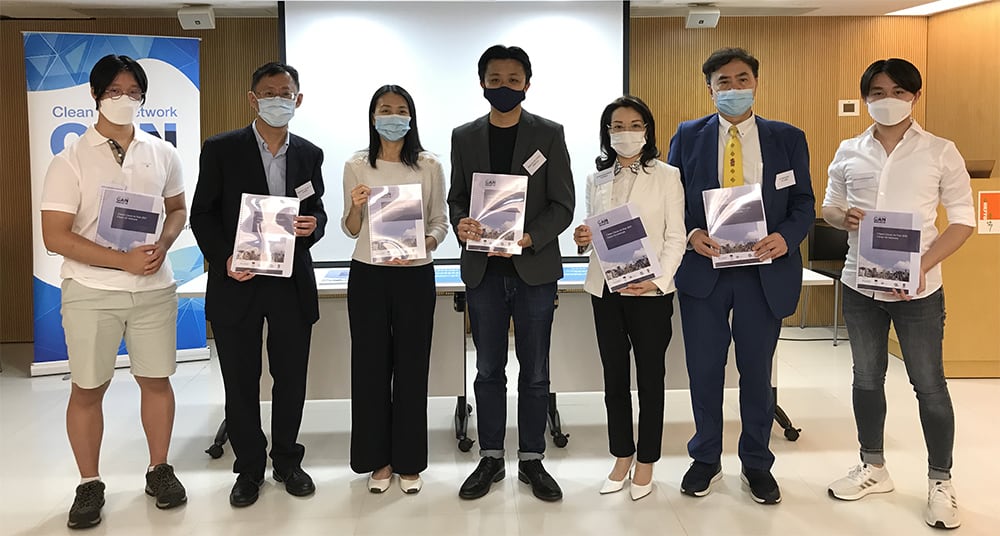
Photo 1: Representatives from the supporting institutions were holding the newly published “Citizen Clean Air Plan”. From the left: Ginu YANG, Member of Clean Air Student Council, Dr. LAM Wai Kei, President of the CHEST Delegation Hong Kong and Macau, Dr. LAM Sin Man, Grace, President of the Hong Kong Thoracic Society, Mr. Patrick FUNG, Chief Executive Officer of Clean Air Network, Dr. SO KY, Loletta, Honorary Secretary of Hong Kong Lung Foundation, Dr. CHAN Yee Shing, Alvin, Council Member of The Hong Kong Medical Association and Nathan CHOI, Member of Clean Air Student Council.
There are two parts of the Citizen Clean Air Plan.
The first part will review how the HKSAR Government has tackled air pollution since the launch of the CAP 2013, to determine where progress has been made, and where it has not.
The findings in the first part will help us to identify the gaps where we need to pay stronger attention to, in order to achieve bigger impacts. The second part will set out the aspiration and conditions to define the success of the next phase of initiatives towards cleaning the air.
We have mapped two routes to make further achievements on cleaning the air.
Firstly, we urge the HKSAR Government to establish ambitious clean air goals which are comparable to global cities and complying with the most stringent standard of the World Health Organization’s Air Quality Guidelines, to contribute to a truly liveable super region with cleaner air and lower carbon, and to migrate to an exposure-based air pollution management paradigm, that will more effectively protect public health.
Secondly, we also call for the civil society, including the professionals, the academics, the public and private sectors, to work hand in hand, and address specific issues that affect the community on a daily basis but are currently out of reach by the Government policy.
SUMMARY OF REVIEW
REVIEW OF CAP2013
CAP2013 aimed to reconcile some of the disconnections observed in the past administrations (including disconnections in policymaking and science) by changing the system. Major efforts on systemic change included:
- the launch of the CAP 2013 by Environment Bureau in collaboration with Transport and Housing Bureau, Development Bureau and Food and Health Bureau;
- the amendment of Air Pollution Control Ordinance( APCO ) to mandate the review of the Air Quality objectives(AQO) at a minimum of once every 5 years; strengthen communication through replacement of the old API with AQHI;
- strengthen the regional control mechanism including regional collaborations of Guangdong, Hong Kong and Macau;
- modernising the Air Quality Management System using scientific evidence-based approach;
There were varying degrees of impact achieved on the above systemic changes. Some of the gaps observed:
- Unclear roles and lack of measurable goals to be achieved by Transport and Housing Bureau, Development Bureau and Food and Health Bureau;
- Weaknesses of Air Pollution Control Ordinance and Environmental Impact Assessment Ordinance on protecting public health were unaddressed
- Controversial mechanism of AQOs Review
- Ineffective AQHI’s to transform individual behaviour
- Not able to translate regional reduction effort to health terms as regional reduction targets are not set in terms of level of pollution concentration
- Insufficient coverage of street-level air pollution monitoring network
REVIEW OF GOVERNMENT POLICY MEASURES 2013-2020
- Insufficient progress made to accelerate transformation to zero emission road transport, especially the commercial vehicles and public transport; limited improvement on pedestrianisation policy;
- Insufficient progress made to tackle nitrogen oxides emission from ocean-going vessels, and volatile organic compound emission from river vessels and local vessels;
- Insufficient progress made to tackle regional ozone, not able to identify precursors of the formation of ozone;
- Insufficient progress made in formulation of a clean energy policy that will achieve clean air and 2050 carbon neutrality;
REVIEW OF AIR & HEALTH DATA 2013-2020
- In summary, health outcomes due to air pollution declined by up to 50%. Concentration of major air pollutants largely reduced except ozone. Roadside nitrogen dioxide and ambient ozone remain a key public health risk;
- Concentration of particulate matter, nitrogen dioxide, and sulphur dioxide had dropped by 30%;
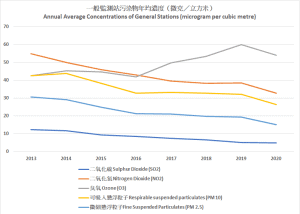
Figure 1: Annual average concentrations of major air pollutants in Hong Kong – roadside stations (all units in microgram per cubic metre) (Source: EPD)

Figure 2: Annual average concentrations of major air pollutants in Hong Kong – general stations (all units in microgram per cubic metre) (Source: EPD)
- Concentration of ambient ozone has reached a historic record in recent years;
- The annual concentration of roadside nitrogen dioxide and particulate matter still exceed WHO’s most stringent level by 60%-90%.
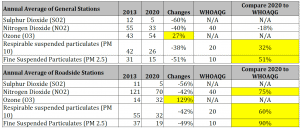
Figure 3: Comparison of WHOAQG and annual average concentrations of general stations and roadside stations (all units in microgram per cubic metre)
Note: WHOAQG for SO2 are 10 minutes and 24 hours average, WHOAQG for O3 is 8 hours average. According to WHOAQG, the limit of O3 for 8 hours average is 100 µg/m3. Under Hong Kong’s AQOs, the concentration limit of O3 is 160 µg/m3, number of exceedances allowed is 9 times. Based on EPD’s data in 2020, 5 general stations recorded exceedances more than 9 times, including Tuen Mun (11), Tung Chung (11) and Tai Po (14).
According to WHOAQG, the limit of SO2 for 24 hours average is 20 µg/m3. Under Hong Kong’s AQOs, the concentration limit of SO2 is 125 µg/m3, number of exceedances allowed is 3 times. Based on EPD’s data in 2020, all stations’ concentration of SO2 met the HKAQOs.
Source: EPD, WHO
- According to Hedley Environmental Index , since 2013, air pollution had caused approximately 16,500 premature deaths, 1,096,000 avoidable hospital bed days, and 25 million avoidable doctor visits;
- In taking a year-on-year review, the number of deaths attributable to air pollution had fallen from a high of 3,365 in 2013 to 1,686 in 2018 which represented a 50% decline. However, in 2019, the number of deaths had climbed again, to 1,745;
- The figures for other health impacts depict a similar trend;
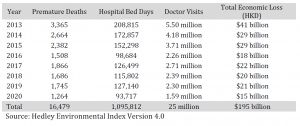
Figure 4: Health and economic loss due to air pollution (Source: Hedley Environmental Index Version 4.0)
SUMMARY OF RECOMMENDATIONS
In the Citizen Clean Air Plan, CAN has set out the aspiration and conditions to define how the next phase of success of clean air of HKSAR, is to be measured for the upcoming decade.
The definitions of success are:
A) Whether the air quality of HKSAR will become one of the best in 2030.
Specifically, whether the air quality of HKSAR will be levelled with other global cities, like London, New York, Singapore by 2030; and whether Hong Kong’s Air Quality Objectives will be levelled with WHO’s most stringent Air Quality Guidelines by 2035.
B) Whether HKSAR will migrate to exposure-based management paradigm.
For information – currently, the HKSAR Government adopts an emission-based air pollution management. Success of policy measures are defined by the level of emission reduced, and policy measures are prioritized to tackle the highest emitters to maximize gain on emission reduction.
If HKSAR will migrate to adopt exposure-based management as the key approach, specifically, success of the policy measures should be measured by the level of exposure (contact of air pollution on human)/ health risk reduced; and the Government should deploy a mechanism to prioritize policy measures that maximize the gain on exposure / health risk reduction.
C) Whether regional pollution can be significantly controlled thus Greater Bay Area becomes a truly liveable city with clean air and low carbon.
Specifically, there are 4 aspects of work to be clarified by the Government:
- How can a regional institution be set up to strengthen effective coordination and legislation?
- How will the gap on regional ozone, nitrogen oxides emission from ocean going vessels, volatile organic compound emission from river vessels (including Macau and PRD Ferries) be narrowed?
- How will the emission standard of PRD waters be tightened further – through application to become one of the designated Emission Control Area (ECA) under International Maritime Organization (IMO) or tighten the emission standard under Domestic Emission Control Area (DECA)?
- How a clean energy policy will be adopted in Greater Bay Area that will achieve both clean air and decarbonisation goals?
D) Whether an informed and mobilised citizenry will be fostered.
The key objectives and principles
This paper sets out principles and recommended measures to achieve the above objectives, and proposes a framework that requires actions from both the Government and the civic society.
> Read Citizen Clean Air Plan (Full version) for key objectives and principles
Sharing from supporting institutions
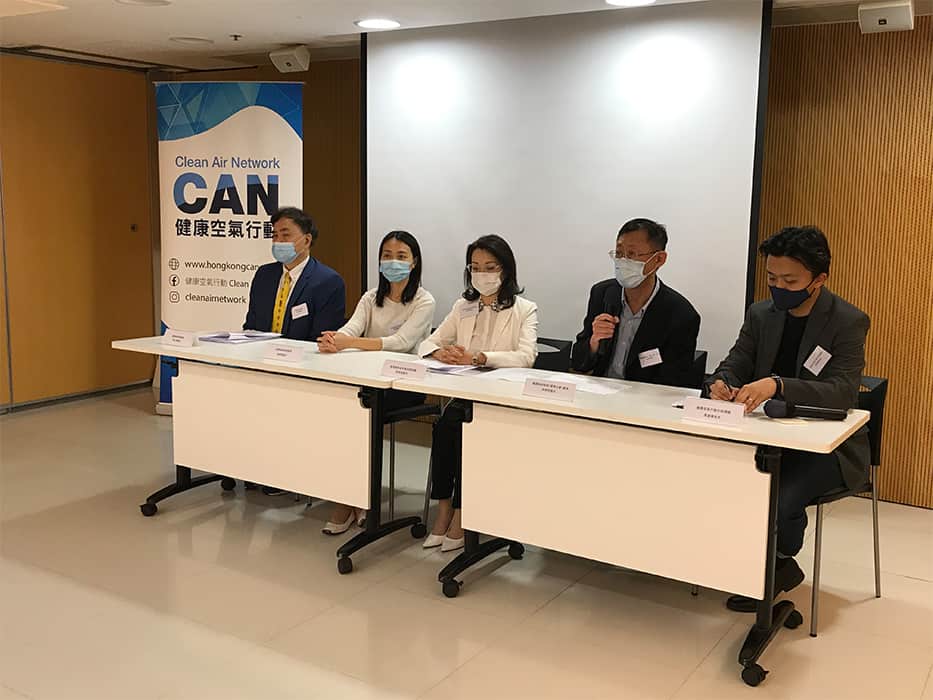
Photo 2: From the left: Dr. CHAN Yee Shing, Alvin, Council Member of The Hong Kong Medical Association, Dr. LAM Sin Man, Grace, President of the Hong Kong Thoracic Society, Dr. SO KY, Loletta, Honorary Secretary of Hong Kong Lung Foundation, Dr. LAM Wai Kei, President of the CHEST Delegation Hong Kong and Macau and Mr. Patrick FUNG, Chief Executive Officer of Clean Air Network
Dr. SO KY, Loletta, Honorary Secretary of Hong Kong Lung Foundation shared some studies showing that air pollution is closely related to respiratory diseases. Even during SARS or COVID 19, studies found out that air pollution relates to the infection rate and the seriousness of the symptoms.
Dr. CHAN Yee Shing, Alvin, Council Member of The Hong Kong Medical Association echoed the Citizen Clean Air Plan that the government needs cross bureau and department cooperation to tackle air pollution and to enhance public health.
Citizen Clean Air Pledge
Apart from the Citizen Clean Air Plan, Clean Air Network also launches Citizen Clean Air Pledge to show the dedication of the citizens and institutions to clean up Hong Kong’s air.
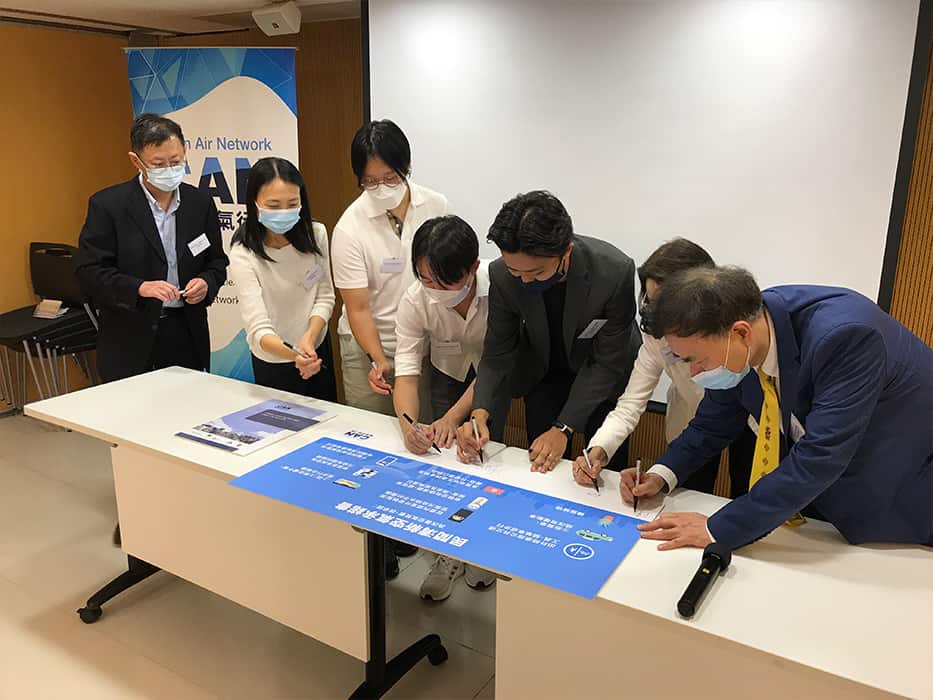
Photo 3: Representatives from the supporting institutions and CAN were signing the Citizen Clean Air Pledge.
Sign the Citizen Clean Air Pledge
